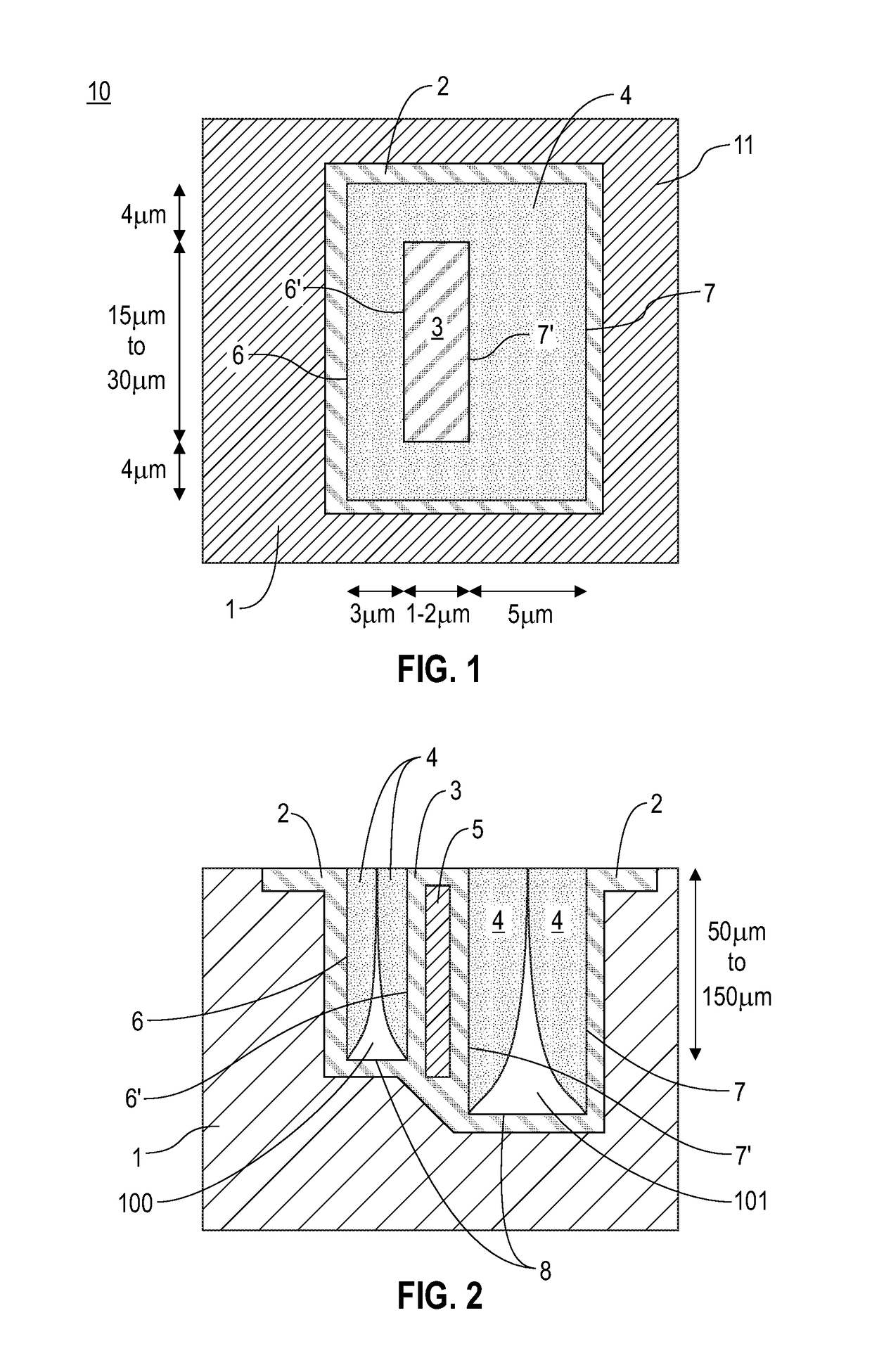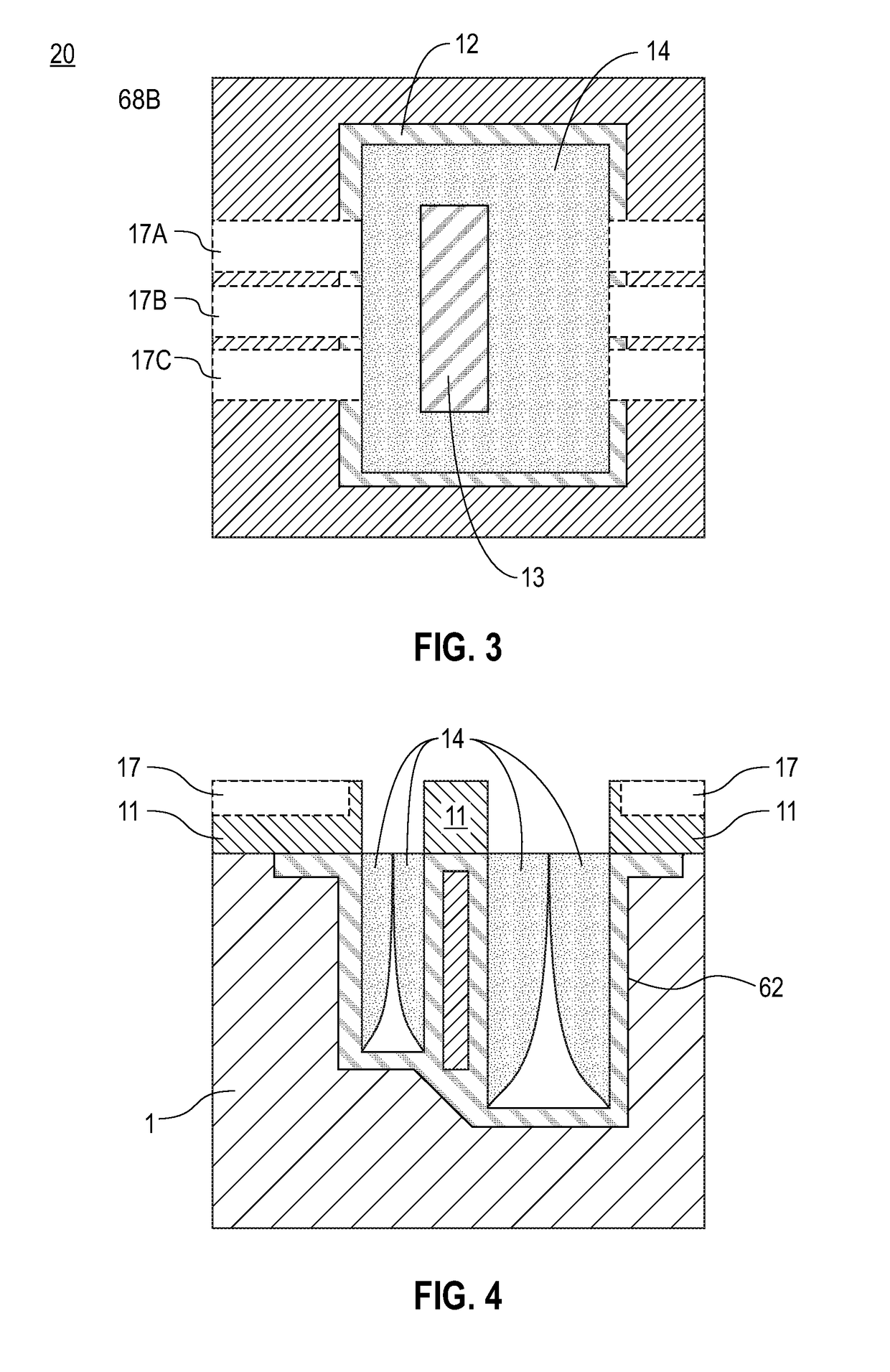Small wafer area MEMS switch
a micro-mechanicalelectronic switch and wafer area technology, applied in the direction of contacts, relays, coatings, etc., can solve the problems of inability to restore the switch to its original state when desired, inconvenient integration with state-of-the-art integrated circuits, and inefficient length
- Summary
- Abstract
- Description
- Claims
- Application Information
AI Technical Summary
Benefits of technology
Problems solved by technology
Method used
Image
Examples
embodiment
An Alternate Embodiment
[0125]The other embodiment of the present invention comprises a MEMS switch as described hereinafter integrally coupled with a single or dual damascene structure thus forming a single unit.
[0126]In this embodiment, tungsten fill in each of the several trenches etched out of the silicon component serves as deflection, stationary and drive electrodes.
[0127]The advantage of the tungsten process is that the tungsten makes the electrodes from the start and there is no need to add any additional materials in the trenches later. One only needs to create contacts at the wafer surface to the tungsten to obtain a finished MEMS switch.
[0128]A dual damascene structure comprises a first etch-stop layer, a first dielectric layer, a second etch-stop layer, and a second dielectric layer. Before copper processes inside the dual damascene structure above the copper metal layer are performed, a barrier layer has to be formed to prevent copper atoms from diffusing into surroundin...
PUM
| Property | Measurement | Unit |
|---|---|---|
| Thickness | aaaaa | aaaaa |
| Dielectric polarization enthalpy | aaaaa | aaaaa |
| Electrical conductivity | aaaaa | aaaaa |
Abstract
Description
Claims
Application Information
 Login to View More
Login to View More - R&D
- Intellectual Property
- Life Sciences
- Materials
- Tech Scout
- Unparalleled Data Quality
- Higher Quality Content
- 60% Fewer Hallucinations
Browse by: Latest US Patents, China's latest patents, Technical Efficacy Thesaurus, Application Domain, Technology Topic, Popular Technical Reports.
© 2025 PatSnap. All rights reserved.Legal|Privacy policy|Modern Slavery Act Transparency Statement|Sitemap|About US| Contact US: help@patsnap.com



